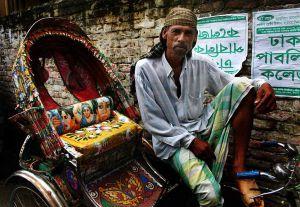
What’s it all about?:
Welcome to Kittur, India. Of its 193,432 residents, only 89 declare themselves to be without religion or caste. And if the characters in Between the Assassinations are any indication, Kittur is an extraordinary crossroads between the brightest minds and the poorest morals, the up-and-coming and the downtrodden, and the poets and the prophets of an India that modern literature has rarely addressed.
A series of sketches that together form a blinding, brilliant, and brave mosaic of Indian life as it is lived in a place called Kittur, Between the Assassinations, with all the humor, sympathy, and unflinching candor of The White Tiger, enlarges our understanding of the world we live in today.
What did I think?:
I had high hopes for Between The Assassinations after really enjoying the authors previous novels, Last Man In Tower and the Man Booker Prize winner The White Tiger. I have to admit to unfortunately being slightly disappointed with this offering and it was only after reading a few other reviews that I discovered that this book was allegedly rejected by publishers and it was only released after Adiga’s Booker win. That’s not to say this novel is a bad read because it certainly isn’t, perhaps it was my own high expectations that ruined it for me! It does have decent and some very favourable reviews on GoodReads but on average it comes in at 3.30 which is about where I would put it myself on the rating chart.
Regular readers of my blog may wonder why I haven’t included this book in my regular feature, Short Stories Challenge as this book consists of fourteen short stories that are very loosely linked together but all have the common theme of being situated in one town in India, Kittur. To be perfectly honest, I wasn’t aware that the book was a series of short stories but it was quite nice to read all of them in one sitting rather than how I usually structure short stories from the same collection. The aim of this book was to paint a portrait of Kittur over a seven day period using fourteen separate stories with very different characters in each. In this way, I believe the book completely hit the target – we hear from a wide variety of personalities, all with an exclusive moral code, belief or dream to follow.
In Between The Assassinations the author gives us the good, the bad and the downright ugly in a country that is slowly rising up from an economic mess to become a real power in the world but still houses a vast amount of poverty, corruption and violence. I found it fascinating to learn about both sides of the coin, for example the bicycle wallah who burns off more calories working than he is ever able to replace and is at risk of dying from exhaustion before he is forty or the children who beg on the streets to fund their father’s drug addiction. When you compare this to the wealthy (and often corrupt in this novel) it does touch something within you and I was often reeling with the unfairness of it all.
Religion also causes many problems in this book, as it does unfortunately through the entire world, and Adiga explores not just the three main religions in India (Muslim, Hindu and Christian) but the ever ominous caste system which includes a class of people so low in status that they are referred to as “the untouchables.” India has moved slightly forward in adopting modern values regarding this system but it is clear that a lot of work still needs to be done. For me, the best thing about this book was that I felt I was getting a real, no holds-barred insight into India during an interesting period of her history (between the assassinations of Indira Ghandi and her son Rajiv). Adiga pulls no punches with his descriptive and very raw writing at times and I really appreciated his honesty. The only reason I’ve given this book an “average,” rating is that although the stories kept me interested I didn’t find the writing as amazing as his previous two novels.
Would I recommend it?:
Maybe.
Star rating (out of 5):


By Steve Evans from India and USA (Dhaka, Bangladesh) [CC BY 2.0 (http://creativecommons.org/licenses/by/2.0)%5D, via Wikimedia Commons

